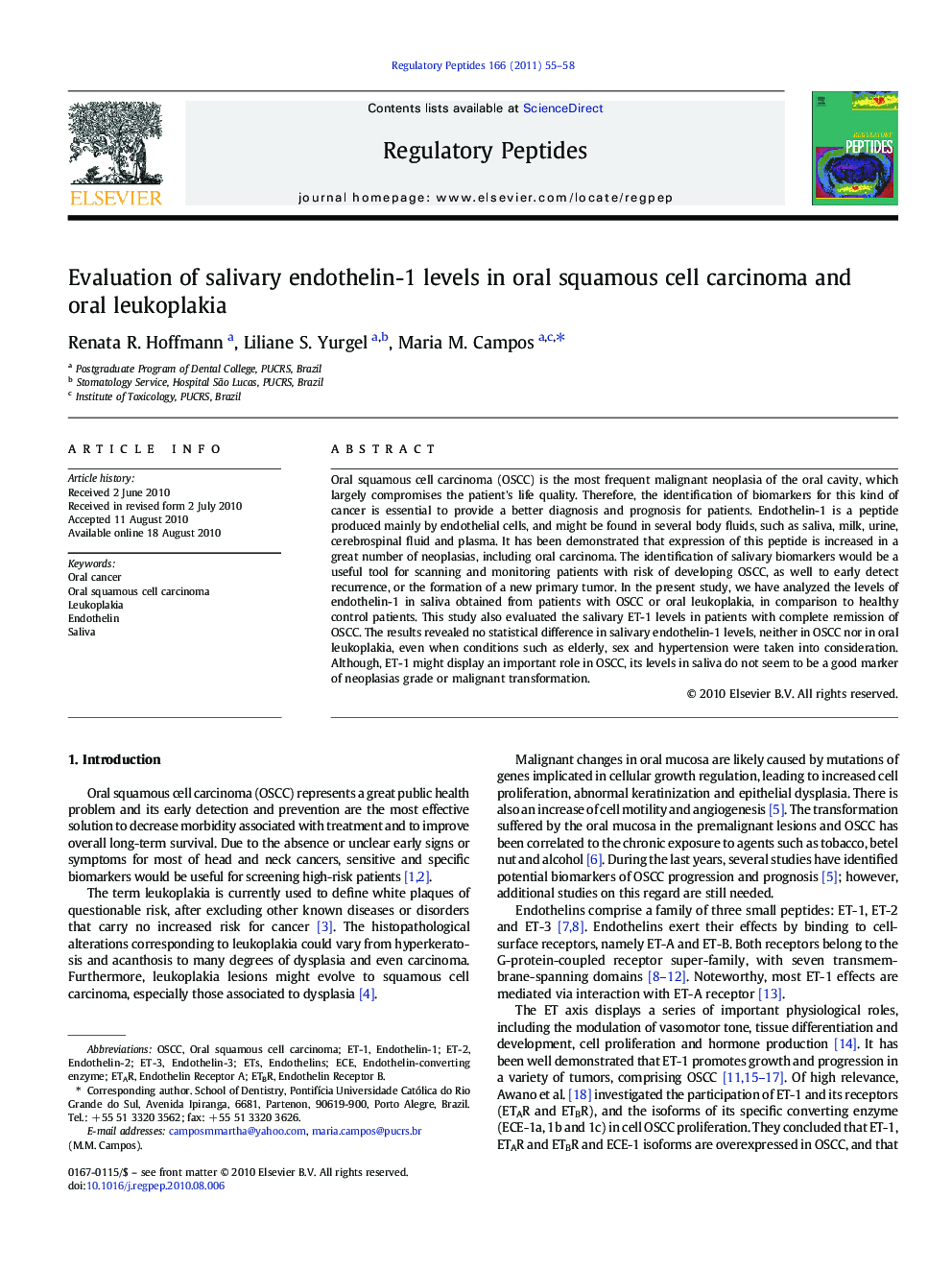| Article ID | Journal | Published Year | Pages | File Type |
|---|---|---|---|---|
| 2022614 | Regulatory Peptides | 2011 | 4 Pages |
Oral squamous cell carcinoma (OSCC) is the most frequent malignant neoplasia of the oral cavity, which largely compromises the patient's life quality. Therefore, the identification of biomarkers for this kind of cancer is essential to provide a better diagnosis and prognosis for patients. Endothelin-1 is a peptide produced mainly by endothelial cells, and might be found in several body fluids, such as saliva, milk, urine, cerebrospinal fluid and plasma. It has been demonstrated that expression of this peptide is increased in a great number of neoplasias, including oral carcinoma. The identification of salivary biomarkers would be a useful tool for scanning and monitoring patients with risk of developing OSCC, as well to early detect recurrence, or the formation of a new primary tumor. In the present study, we have analyzed the levels of endothelin-1 in saliva obtained from patients with OSCC or oral leukoplakia, in comparison to healthy control patients. This study also evaluated the salivary ET-1 levels in patients with complete remission of OSCC. The results revealed no statistical difference in salivary endothelin-1 levels, neither in OSCC nor in oral leukoplakia, even when conditions such as elderly, sex and hypertension were taken into consideration. Although, ET-1 might display an important role in OSCC, its levels in saliva do not seem to be a good marker of neoplasias grade or malignant transformation.
Research highlights►No difference in ET-1 levels was observed between control and oral leukoplakia patients. ►The same was seen when comparing control and oral cancer subjects. ►Exclusion of hypertensive or elderly patients did not change the results. ►Salivary ET-1 is not likely a good marker of neoplasias grade or transformation.
